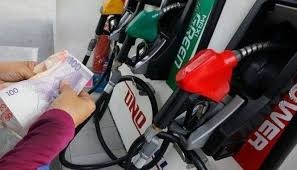MANILA — Motorists across the Philippines can anticipate a welcome relief at the pump next week, as the Department of Energy (DOE) announced on Friday, October 17, that significant rollbacks in domestic fuel prices are expected. This projected decrease is a direct consequence of shifting global supply dynamics, though experts caution that the longevity of this trend remains highly uncertain due to persistent geopolitical volatility.
Based on the four-day trading surveillance of the Means of Platts Singapore (MOPS)—the regional pricing benchmark—the DOE’s Oil Industry Management Bureau has forecasted substantial price adjustments for the coming week.
Assistant Director Rodela Romero of the DOE provided the following expected reductions:
Gasoline: A decrease of P0.30 per liter
Diesel: A more significant rollback of P1.10 per liter
Kerosene: A reduction of P0.65 per liter
Romero noted, however, that these specific figures reflect only the base price movements and do not fully account for business costs, taxes, and other premium charges that are ultimately passed on to consumers.

The Anatomy of the Rollback: Supply Glut and Weakened Demand
The projected decline in prices is primarily attributable to a combination of robust global supply and a notable deceleration in international oil demand growth.
Surplus from Key Producers
A major factor driving the prices down is the oversupply emanating from key global players, including the members of the Organization of the Petroleum Exporting Countries and allies (OPEC+), alongside significant output from both Russia and the United States. Despite various production management agreements among OPEC+ members, the cumulative global output appears to be outpacing consumption rates, leading to a surplus inventory.
IEA Signals Slowing Demand
Further cementing the bearish market sentiment is the revised forecast from the International Energy Agency (IEA). Assistant Director Romero specifically cited the IEA’s pronouncement:
“The International Energy Agency has announced an adjustment to its forecast. It is indicating that the demand growth for oil in the international market has immensely decreased.”
This downward revision in demand expectations suggests that global economic pressures and efficiency gains are finally mitigating the previously relentless growth in crude oil consumption, contributing to the supply glut.
The Influence of Diplomacy
Beyond the fundamental supply-demand dynamics, Romero also highlighted a crucial geopolitical element: the US-facilitated peace talks between Russia and Ukraine. Any perception of de-escalation or a pathway towards a resolution in this major conflict tends to reduce the “risk premium” built into oil prices. Traders price in the risk of supply disruption; therefore, any positive diplomatic movement often translates quickly into lower global oil prices.
Uncertainty Looms: The Fragility of Continuous Rollbacks
Despite the welcome news for consumers next week, the question of whether these price reductions will continue in the coming weeks remains highly contentious. When pressed on the issue, Romero’s response was cautiously optimistic but underscored the underlying market volatility:
“Hopefully [the rollbacks continue], but as I’ve told you, there are still many factors looming.”
This cautious outlook is not unfounded, as the previous week’s pricing demonstrated the market’s unpredictable nature. Gasoline prices, for instance, increased by P0.30 per liter this week, despite initial projections based on MOPS data suggesting a rollback. This disparity illustrates how rapidly the “premium costs”—including local logistics, distribution markups, and taxes—can quickly consume any potential reduction in the base price.
Persistent Geopolitical and Economic Headwinds
Romero emphasized that the primary destabilizing factors remain unresolved and pose a continuous threat to stable pricing:
“So those factors that never disappear—the tariff issues, geopolitical conflicts—are still there. While the so-called risk premiums may decrease, the underlying factors are still not solved.”
The ongoing threats posed by global trade tensions, continued (though fluctuating) geopolitical conflicts, and the potential for a sudden, unexpected supply disruption mean that the current trend of rollbacks could be quickly reversed by a single event.
Seasonal Demand Spike
Adding another layer of complexity is the predictable pattern of seasonal demand. Romero pointed out that oil demand typically sees an uptick during the last quarter of the year. This increase is driven primarily by the need for heating fuel—such as gasoline, diesel, and Liquefied Petroleum Gas (LPG)—in the Northern Hemisphere as winter approaches. This seasonal demand surge could potentially soak up the current supply glut, exerting upward pressure on international prices and challenging the continuity of the rollbacks.
The Recent Pricing History: A Volatile Picture

The expected rollbacks next week follow a period of intense price volatility in the domestic market, underscoring the necessity of the current relief.
In the preceding week, the market saw mixed results despite global signals:
Diesel saw no change in price, halting a worrying trend.
Kerosene did see a slight decrease of P0.20 per liter.
Gasoline bucked the expected trend and increased by P0.30 per liter.
This period of instability was preceded by a financially taxing time for consumers, as the prices of both diesel and kerosene had risen for seven consecutive weeks, imposing a heavy burden on transportation and essential services.
The upcoming price adjustments offer temporary respite, but the DOE’s warning is clear: until the core geopolitical and structural supply-demand imbalances are truly resolved, Filipino consumers must remain prepared for the volatility that defines the global oil market.





